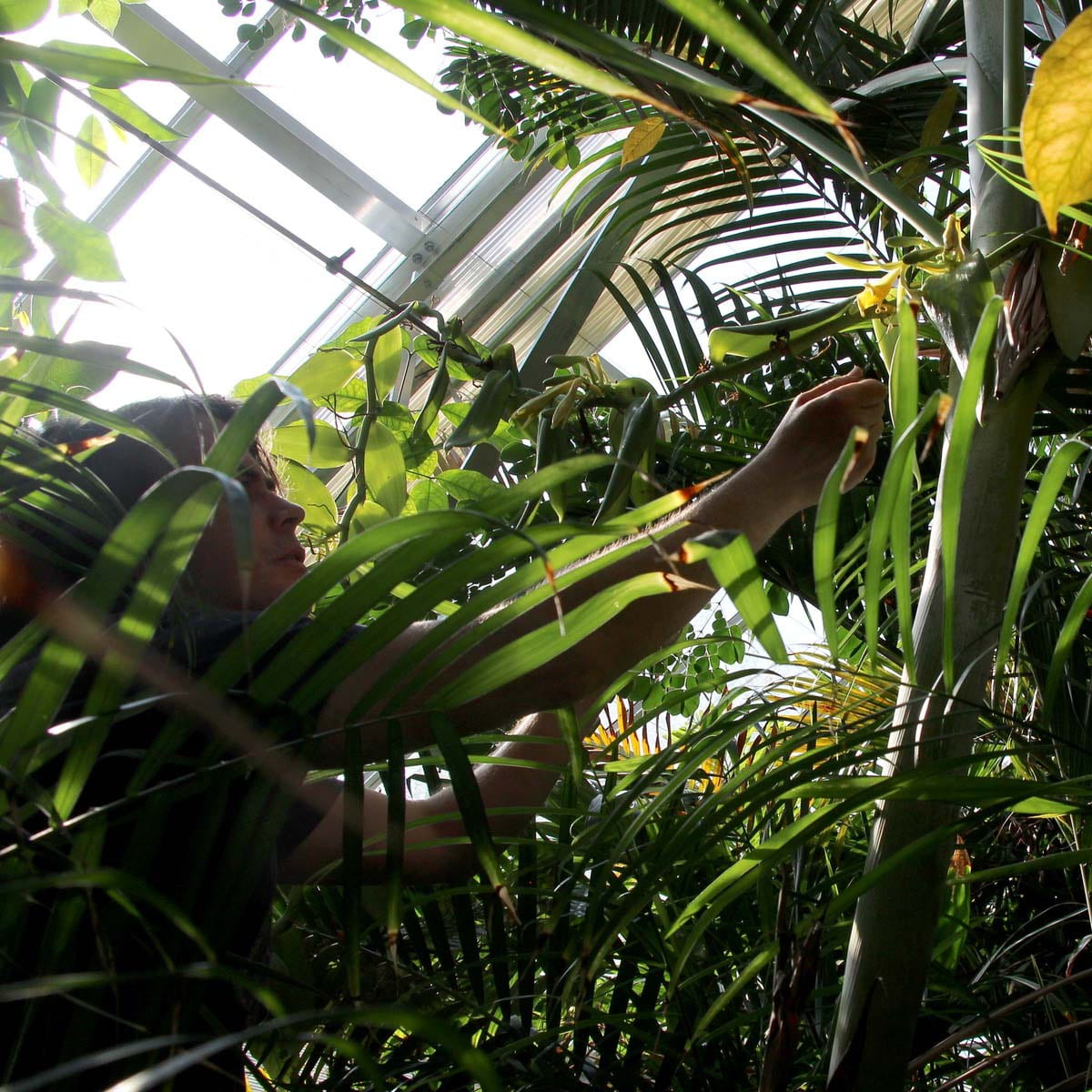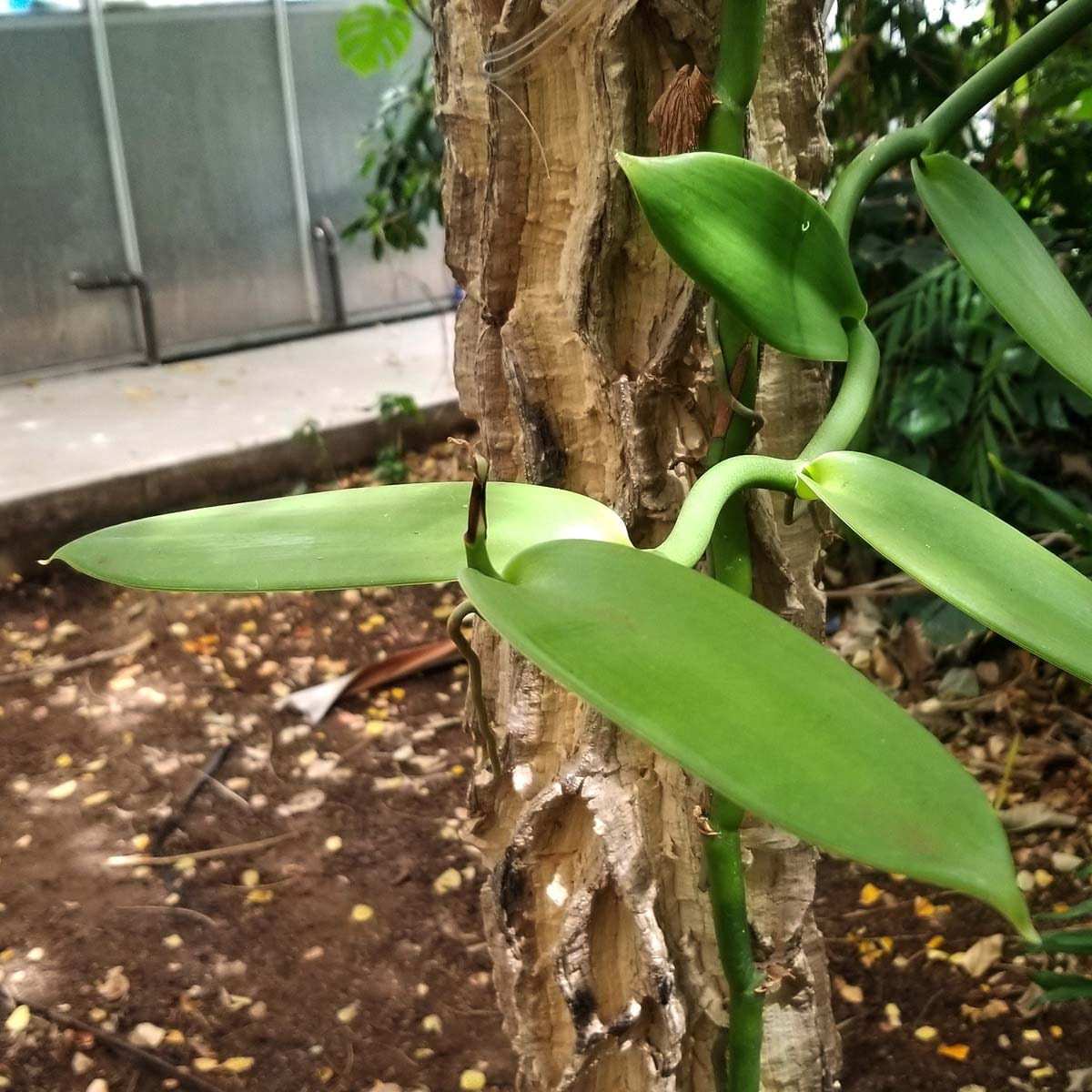A closer look at a familiar flavor
Vanilla planifolia
Family: Orchidaceae
Conservation status: Endangered
Climbing the corky Saman Tree (Samanea tubulosa) behind you along the path through the Palm House is the tropical orchid vine Vanilla planifolia. The fruits (sometimes called pods because they resemble beans but are actually capsules) are harvested, dried, and cured to lend their distinctive flavor and aroma to many foods, particularly confectionaries. The flowers, however, do not smell like vanilla, and the unripe fruit has no taste.
Native to Mexico south through Central America to Brazil, Vanilla planifolia was introduced to Réunion Island in the Indian Ocean in the 19th Century. But in the absence of its natural pollinator, a particular species of Melipona bee, the plants failed to produce pods.
Edmond Albius, a young enslaved person who had been taught how to cross-pollinate male and female watermelon flowers, discovered how to pollinate vanilla flowers by lifting the rostellum (a small flap separating the male and female parts of the vanilla flower) and transferring pollen manually.
Albius’s technique allowed vanilla to be cultivated outside of its native range and is still used today. Despite having made the global vanilla industry possible, he never received any compensation for his findings, and some tried to discredit his discovery.





